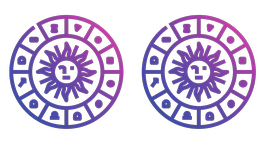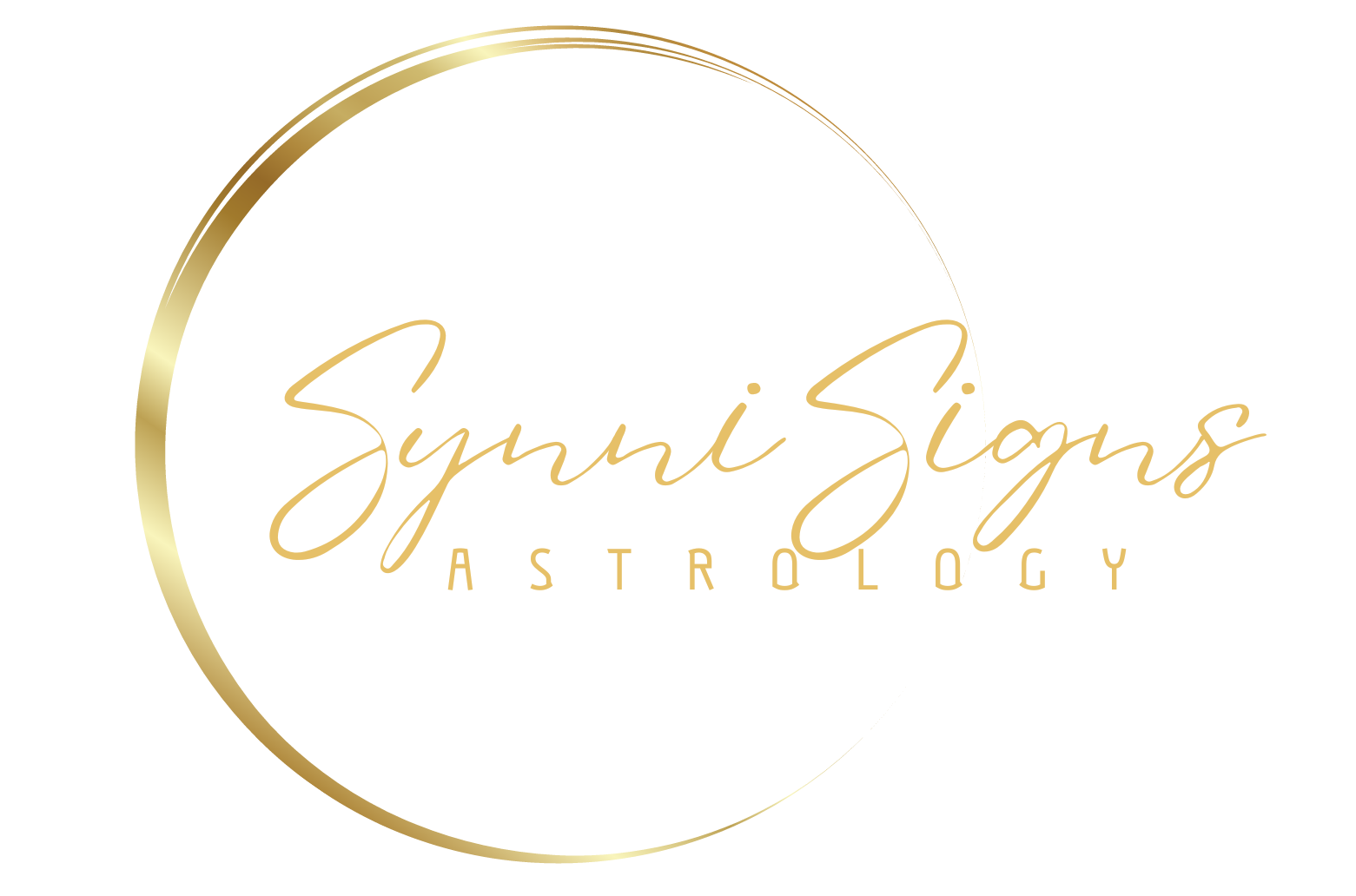
Synastry offers a fascinating lens through which to examine the dynamics of a relationship by comparing the natal charts of two individuals. This technique involves superimposing the two charts, typically with the female’s chart on the inner wheel and the male’s chart on the outer wheel. The focus then shifts to the inter-aspects formed between the planets and angles of each chart, rather than the individual natal aspects. These inter-aspects serve as the foundation for analysing the potential dynamics and compatibility between the two individuals. By studying how their planetary energies interact and influence each other, astrologers can gain insights into the strengths, challenges, and overall dynamics of the relationship. In addition to synastry charts, astrologers may also utilize other methods like composite charts and mid-space mid-time charts to further explore the dynamics of a relationship. Composite charts involve combining the midpoints of each planet in the two individual charts to create a new chart representing the relationship as a whole. On the other hand, mid-space mid-time charts take a different approach by calculating the average latitude and longitude of the two birth locations to create a fictitious median chart. This chart represents the relationship dynamics based on a unique method of calculation. Each of these techniques offers valuable insights into different facets of a relationship, allowing astrologers to provide a more comprehensive analysis of the potentialities and challenges within the partnership.
Synastry, the ancient art of juxtaposing the horoscopes of two individuals, remains a revered practice in astrology, prized for its insights into interpersonal dynamics. While many synastry resources delve into the interplay between the Sun, Moon, and planets of one chart with those of another, the scope extends beyond romantic unions to encompass diverse relationships like business partners, parent-child bonds, or even friendships and rivalries. However, our focus here will center on examining the compatibility and dynamics between partners in romantic or potentially romantic relationships. This aspect of synastry, often referred to as the synastry of love relationships, scrutinizes various astrological factors to glean valuable insights into the nature and potential of romantic connections.
– Ascendants
– Sun
– Elements
– Moon
– Mars & Venus
– Aspects
– Houses
The Ascendant and the Descendant
The ascendant, or rising sign, in your horoscope holds significant insights into your personality, particularly regarding how you interact with the external world. Given that relationships play a pivotal role in our lives, understanding the dynamics between your rising sign and the sign on the descendant is crucial. The ascendant degree, marking the beginning of the first house, sets the tone for the remaining houses, influencing the signs on their cusps. Your ideal match is often symbolized by the personality type indicated by the sign on the descendant, which is the opposite sign to your ascendant. This sign governs the seventh house, known as the domain of relationships, making it the focal point in synastry analyses. The seventh house represents the individuals with whom you form close bonds and associations. The concept of opposites attracting holds merit in astrology, as mirrored personalities tend to complement each other, fulfilling mutual needs and fostering strong partnerships. When someone’s chart mirrors yours, it creates a natural synergy, forming a cohesive unit built on mutual understanding and support.
Sun Signs
Astrologers are frequently asked about the compatibility of Sun signs, but the truth is that there’s no simple answer. Sun sign compatibility, while interesting, is just one piece of the puzzle when it comes to synastry. The Sun represents ego and individuality, revealing inherent traits that remain relatively consistent throughout life. However, focusing solely on Sun signs overlooks many other important factors. When considering Sun sign compatibility, it’s helpful to group the signs into elements: fire (Aries, Leo, Sagittarius), earth (Taurus, Virgo, Capricorn), air (Gemini, Libra, Aquarius), and water (Cancer, Scorpio, Pisces). There tends to be affinity within the same elements, with signs in the same group often getting along better. Additionally, there’s often compatibility between signs of complementary elements, such as air with fire, and earth with water. However, it’s essential to remember that individual charts are complex, and compatibility goes beyond Sun signs alone.
The predominate element matches
While the elements play a significant role in assessing compatibility, it’s crucial to recognize that the Sun sign is just one factor among many. Each planet in the birth chart also falls into a specific zodiac sign, influencing the overall elemental balance of an individual. For instance, even if someone’s Sun sign is in a water sign, if most of their other planets are in fire signs, they may exhibit more characteristics of a fire sign individual. Therefore, while the Sun sign provides insight into the dominant element, it’s not the sole determinant. When evaluating compatibility, it’s essential to consider the elemental composition of both individuals’ charts. You’re likely to find compatibility with someone who shares a predominance of the same element as you. However, if your partner’s elemental makeup differs from yours, it’s important to embrace and appreciate these differences, fostering understanding and tolerance in the relationship.
The Moon's important role
The Moon holds significant influence in relationships due to its association with emotions and ingrained responses. When comparing charts, aspects involving the Moon can reveal valuable insights into the dynamics between individuals. For instance, if one person’s Moon is square or opposed to the other’s Moon, it suggests potential conflicts stemming from differing backgrounds and past experiences. On the other hand, a conjunction between one person’s Moon and the other’s Sun indicates a strong emotional connection, where the Moon person resonates deeply with the ego and identity of their partner. Favourable Sun/Moon aspects, such as conjunctions, sextiles, or trines, can contribute to harmony and understanding in the relationship. In fact, the relationship between the Sun in one person’s chart and the Moon in the other’s may hold particular significance, often playing a crucial role in the overall compatibility and emotional rapport between partners.
Mars and Venus
Mars and Venus hold significant sway in matters of romance and courtship. Mars reflects your romantic desires and sexual assertiveness, representing the pursuit in the mating process. It signifies your level of sexual passion and aggression, shaping the intensity of your romantic pursuits. Therefore, Mars is symbolically linked with the male and embodies the drive to pursue. Conversely, Venus governs how you attract a partner, emphasizing the softer aspects of love such as romance and emotional responsiveness. Venus’s role in attracting a mate aligns it symbolically with the female. The interplay between Mars and Venus speaks volumes about the chemistry shared between two individuals, often manifesting as “love at first sight” or a strong sexual allure. However, it’s important to note that while intense initial attraction can be exhilarating, it doesn’t guarantee a lasting and fulfilling relationship. Other factors come into play in determining long-term compatibility. Nevertheless, a harmonious alignment between Mars and Venus adds depth and richness to a relationship. Ideally, Mars and Venus should be in the same sign or element for the most auspicious connection, with an even stronger attachment when they form a conjunction or trine aspect.
The aspects
The aspects between the Sun, Moon, and planets in one individual’s chart and those in their partner’s (or potential partner’s) chart reveal the intricacies of how smoothly their relationship may unfold. It’s essential to recognize that virtually every comparison will yield both harmonious and challenging aspects. Finding a perfect match is rare, so expect a mix of positive and negative influences. While some harmonious aspects can enhance compatibility and strengthen the bond between partners, too many negative aspects suggest potential conflicts and challenges in the relationship. However, it’s crucial to remember that relationships are dynamic and complex, and a variety of factors contribute to their success or struggles. For detailed interpretations of the major synastry aspects and their implications, you can explore synastry aspect delineations. These insights can provide valuable guidance in understanding the dynamics of your relationship with others.
Synastry Planets in Houses
When your partner’s planets fall into your houses or vice versa, it can significantly impact your relationship dynamics and interactions. Here’s how:
1. Planet in Partner’s House: If your partner’s planet falls into one of your houses, it infuses that area of your life with the qualities and energies associated with that planet. For example, if your partner’s Venus is in your 7th house of partnerships and marriage, it can indicate a strong romantic connection and a focus on harmony and affection in your relationship. Each planet brings its unique energy to the house it occupies, influencing the themes and experiences related to that area of life.
2. Your Planet in Partner’s House: Conversely, when your planet falls into your partner’s houses, it affects how they experience that area of life in relation to you. For instance, if your Mars is in your partner’s 10th house of career and public image, it could suggest that your assertiveness and drive impact their professional ambitions and public life. Your presence in their houses can activate and stimulate those areas, shaping their experiences and perceptions.
3. Mutual Influence: The placement of your partner’s planets in your houses and vice versa creates a dynamic interplay between your individual energies. It can deepen your connection and understanding of each other, as you both contribute to each other’s life experiences. For example, if your partner’s Sun falls into your 5th house of romance and creativity, they may inspire you to express yourself more freely and enjoy life’s pleasures.
4. Challenges and Opportunities: Depending on the planets involved and the aspects they form, the placement of your partner’s planets in your houses can bring both opportunities and challenges to your relationship. Harmonious aspects can enhance compatibility and mutual support, while challenging aspects may lead to conflicts or misunderstandings that need to be addressed.
Overall, the placement of your partner’s planets in your houses and vice versa adds depth and complexity to your relationship, shaping your shared experiences and influencing how you relate to each other in various areas of life.
Visit synastry planets in houses.
















































